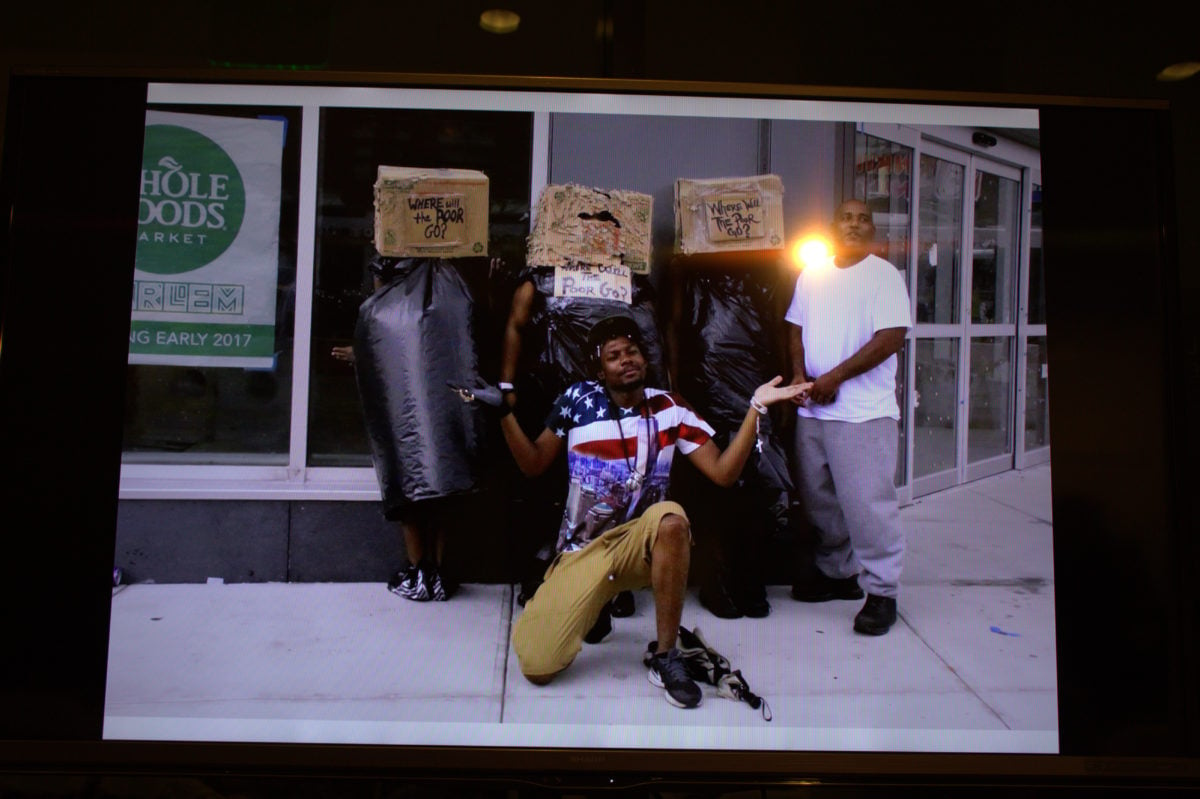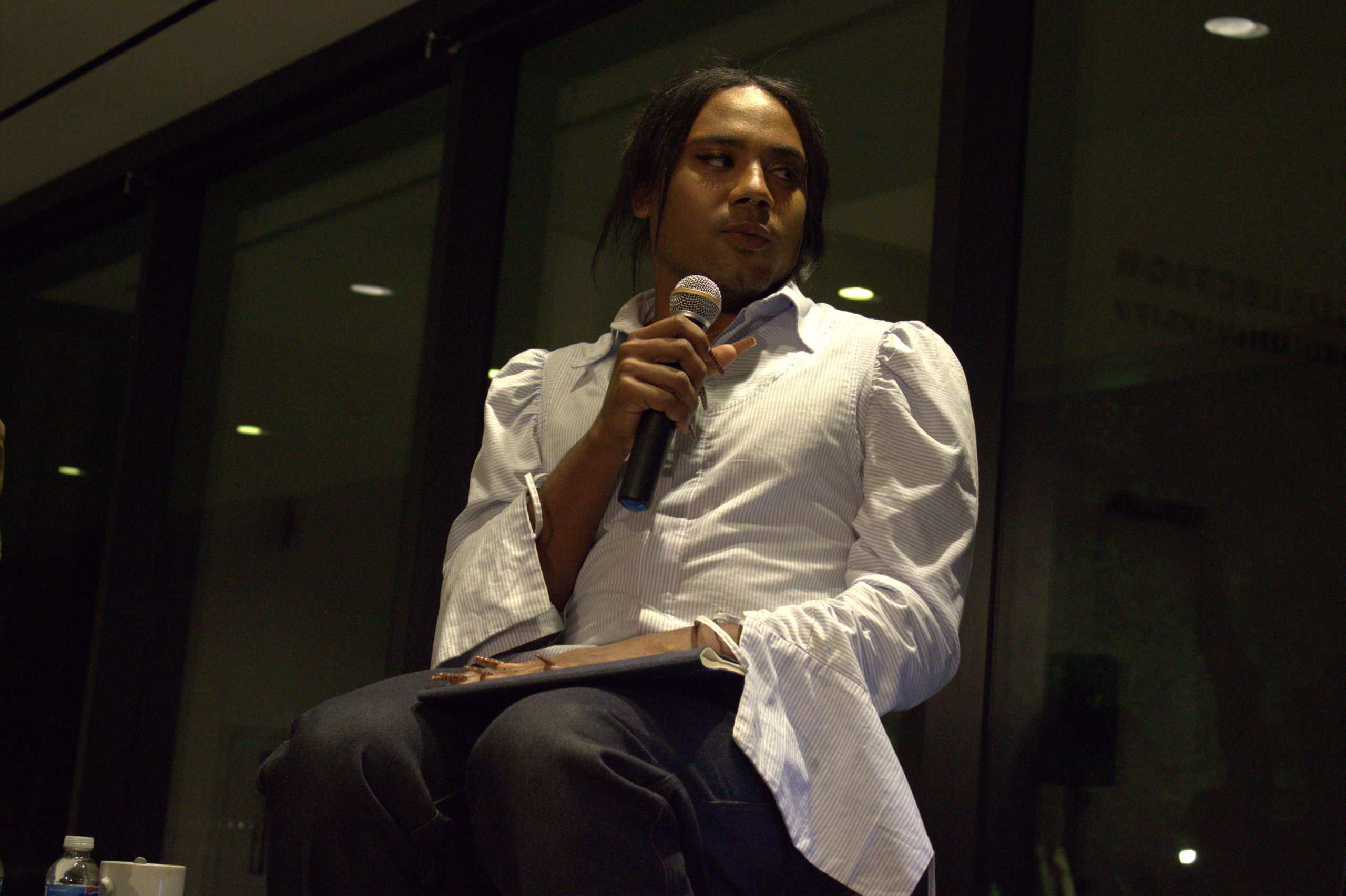Artist Kiyan Williams ’13 visited Stanford this Tuesday at the Anderson Collection’s first indoor event since the start of the pandemic. The event, co-sponsored by the museum, the Center for Comparative Studies in Race and Ethnicity (CCSRE) and The Institute for Diversity in the Arts (IDA), was a conversation moderated by IDA Director A-lan Holt ’11. Williams quickly delved into their art practice, sculpture and performance and how it has developed thematically since their time at Stanford.
Williams described their path as shifting from performance to more material-based work. At Stanford, they studied CSRE and Theater and Performance Studies (TAPS), during which they were introduced to performance artists that “used their bodies to confront conditions that limited their lives.” After learning about public protest art, Williams began to see performance art as a tool for intervention, activism and community organization.
We can see this in one of Williams’ early works, titled “Where Will the Poor Go?” This performance art piece took place in New York City in 2014 after Williams graduated. They traveled by train from Brooklyn to Harlem, ending their trip at the local Whole Foods. They chose to stop at the supermarket because of the community tensions around gentrification at the time; Whole Foods’ move into Harlem emphasized the shifting demographics in the neighborhood as African-Americans were pushed out of their homes. The performance itself, which consisted of Williams and others dressed in trash bags and holding protest signs, allowed the audience to observe the effects of gentrification.

“This early performance was me using my own body as a way to call attention to and contend with the larger questions me and my community encountered,” Williams said.
The next piece they discussed is called “Unearthing,” which Williams described as their first fully realized work. This artwork was first staged in 2014 at Dixon Place and produced during Williams’ art residency EmergeNYC at The Hemispheric Institute at New York University. Williams was trying to build a life as an artist. This compelled them to ask “big questions:” “Who are you? Where are you from? Who are your people, community? How did you get here?”
In light of these reflections, they were drawn to work with dirt to center themes of home, belonging, dispossession and displacement. “Unearthing” catalyzed the beginning of the ongoing relationship Williams has with “soil, earth and organic materials,” marking what they call the “genesis of their artistic process.” Buried waist-high in dirt, Williams adorned their body in paint and glitter, transforming into an “otherworldly being” to reflect their fluid definitions of gender, body and home. They described the process of “unearthing” themselves as a way to arrive at meditations. “Unearthing” was also performed at Meyer Green in 2018 — A-lan Holt remembered the large amounts of dirt brought to campus and how genderqueer students and Oakland residents participated in the show.
“It was a ritual of some sort and, in a way, reclaiming space,” Williams said about the project. “Wherever I choose to root myself, as seen by the performance, is home, is where I belong. It was a type of grounding that was individual and also collective.”
Their relationship with dirt continues to evolve. In graduate school, Williams explored dirt with its multiple meanings. “An Intimate Encounter with Dirt” was inspired by a quote from Mary Douglas: “Dirt is matter out of place. Dirty things are those that disrupt dominant belief systems and norms.”
In the piece, Williams takes a closer look at this theme of departure by using dirt as an extension of their flesh and an articulation of their own subjectivity. They thought about how Black, queer and working class people are considered abject within white heterosexual hegemonic culture.
“I was reclaiming that idea of being matter out of place, with my art serving as a confrontation and act of resistance to normative culture,” Williams said. “The goal was to reclaim dirt as abjection but also vitality.”
“An Intimate Encounter with Dirt” was performed in 2018 at Columbia University’s Wallah Art Gallery, which had just opened to the public. The gallery’s building was part of the University’s redevelopment plan to expand north into Harlem by using eminent domain to displace neighborhood residents. Here, the immaculacy of the museum was interrupted by Williams performance, and, thus, the harm the institution had caused was brought into the limelight. “Quite literally I was taking my ‘dirt’ and bringing it into this museum,” Williams recalled.
Earth and its multitude of meanings are also the focus of their newest piece “Reaching Towards Warmer Sun,” which has been on display at the Anderson since July 2021. Sculpted during a fellowship at Virginia Commonwealth University, the public art installation is set among the grove trees outside of the Anderson and consists of several hands reaching upward from the ground. Williams sculpted these hands using soil collected near the piece’s original location along the banks of the Powhatan (James) River in Richmond, Va.
Williams, whose creative process often includes walking around specific locations and “opening their full range of sentience” to observe and learn the social and historical context of a space, explained the location’s significance — it’s where some of the first enslaved Black people landed in the “New World.” “Reaching Towards Warmer Sun” ultimately serves as a public intervention against a “willful amnesia” of harm the country has caused toward communities of color.
“I am interested in how history is remembered and omitted in public spaces and objects,” Williams said. “For instance, the monuments [such as] those on Monument Avenue that celebrate Civil War criminals are still on display.” As Williams was creating “Reaching Towards Warmer Sun,” protests broke out across the country, and many privileged U.S. citizens confronted the violence of American history for the first time.
Williams had some difficulty installing “Reaching Towards Warmer Sun,” in part because their work — which supposedly did not have the proper installation permits — was removed by the city. It was an extensive process to retrieve their materials.
“This really shows the policing of public spaces, of art and of lives.” A-lan Holt added.
To conclude, Williams discussed their complicated, context-dependent relationship with art and social justice. Their definition of social justice is a project rooted in addressing and repairing structural and systemic harm, and this approach to art practice and pedagogy is productive as one learns to engage with the past, humanity and how to exist outside of art itself. This opposes traditional pedagogy, which attempts to adopt a watered-down version of protest that isolates one from the world, teaching art as a form of capital. The latter approach harmfully tokenizes people of color and turns social justice into a buzzword. Remembering is just a first step to repair; liberation is the goal. As Williams explains, “It’s not about color; it’s about commitment [to repairing harm].”
Williams will continue to focus on earth as a catalyst for life, growth, transformation and decay — a cycle they are heavily invested in. As for the future, they see a world of self-determination for those who are currently being harmed:
“I imagine liberation as not only surviving and receiving basic needs but living on one’s own terms and grounding our lives as certainty, a sustaining life.”
This article has been edited to reflect that “Unearthing” was first staged in 2014, before Williams had their MFA from Columbia. The article has also been edited to explain that Williams had difficulty installing “Reaching Towards Warmer Sun” because the sculpture itself was not permitted, not because their car was incorrectly permitted. The Daily regrets this error.
